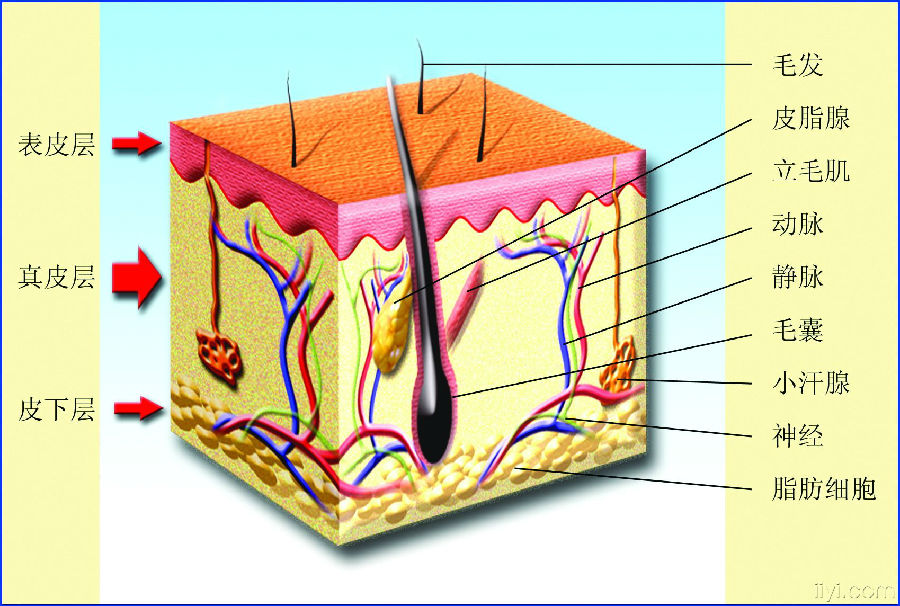(单词翻译:单击)
The skin is an active organ, which protects, secretes, excretes and regulates temperature.
皮肤是十分活跃的身体组织,它能起到保护、分泌、排泄和调节体温的作用。
It even acts as a sense organ. The skin has 3 layers: epidermis, dermis and subcutaneous tissue.
它还是人体的感觉器官之一。皮肤由表皮、真皮、皮下组织三层组成。
The epidermis has several thin layers of cells. The deepest layer produces new cells. The new cells move slowly toward the skin surface where they replace the dead cells.
上皮由几层很薄的细胞组成。最下面的一层生成新细胞。新细胞逐渐靠近皮肤表层,替换死细胞。
The dermis is a thicker skin layer. It contains nerve fibers, blood vessels, sweat glands, sebaceous glands and hair follicles.
真皮层较厚。其中包含神经纤维、血管、汗腺、皮脂腺和毛囊。
Sebaceous glands secrete sebum into the hair follicles and lubricate the skin and hair. The sweat excreted cools the body by evaporation.
皮脂腺向毛囊分泌油脂,使皮肤和毛发光滑。排汗会通过蒸发而降低体温。

The oral mucosa does not have sebaceous or sweat glands, hair follicles.
口腔黏膜没有皮脂腺、汗腺以及毛囊。
Instead, salivary glands secrete saliva through ducts at the base of the mouth. Saliva helps clean and keep external mucosa wet.
而唾液腺通过口腔底部的排泄管分泌唾液。唾液帮助外部口腔黏膜保持清洁湿润。
The subcutaneous layer contains blood vessels, nerves, lymph and loose connective tissue. Subcutaneous tissue also supports upper skin layers.
皮下组织包括血管、神经、淋巴和疏松结缔组织。皮下组织还对其上层皮肤起到支撑作用。
The skin and mucosa exchange oxygen, nutrient and fluids with underlying blood vessels, make new cells and get rid of dead cells.
皮肤和黏膜与其下的血管交换氧气、营养物质以及液体,生成新细胞,清除死细胞。
They need enough nutrition and circulation to resist diseases. When a person's basic condition changes, the skin often shows this by some change in color, thickness, texture, turgor, and temperature.
皮肤需要足够的营养和血液流通来抵御疾病。人体一些基本情况的变化会体现在皮肤的颜色、厚度、纹理、肿胀程度以及温度的变化上。
译文属可可原创,仅供学习和交流使用,未经允许不得转载


